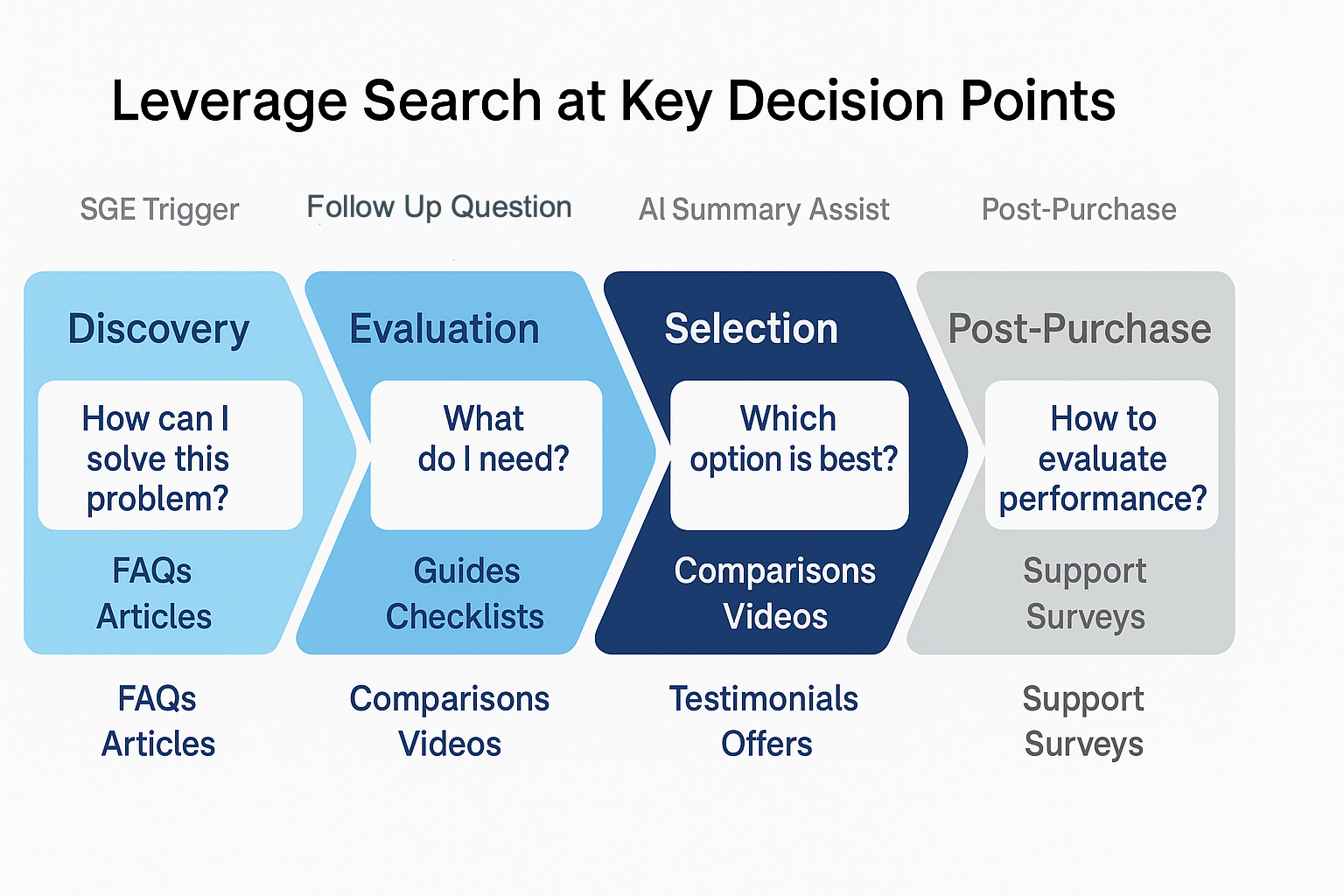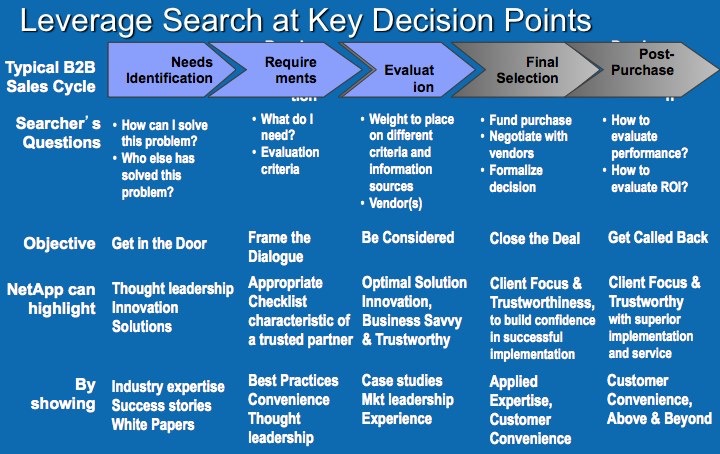FAQ pages must evolve beyond keyword-matching blurbs used as featured snippet bait into intent connectors by creating a chain of answers that anticipates and guides users deeper into their answer journey, creating a more cohesive, intelligent brand experience. In the age of AI agents and predictive search, the FAQ isn’t the end of the answer—it’s the start of a conversation.
As search has evolved from static lookups to fluid, conversational discovery, your FAQ content must mature from isolated answers into orchestrated experiences. This shift—from Static Answers to Strategic Journeys—demands that every question be seen as a doorway, not a destination. It’s not enough to satisfy curiosity; your content must propel it forward.
The Changing Role of FAQs in the Answer Economy
Historically, FAQs have captured quick wins in organic search by matching popular queries and aiming for featured snippets. However, as Google, Bing, and AI-driven agents shift toward conversational search, the bar for value has been raised.
Today, with search journeys becoming more conversational and AI systems predicting the next likely question, we must reconnect with that original idea: Search isn’t one moment—it’s a sequence of decisions. FAQs can anchor those moments when treated not as isolated Q&A snippets but as layered, strategic content assets aligned to real user needs across the full lifecycle.

Two decades ago, at the ClickZ Conference in New York, I introduced the necessity of leveraging search at key decision points, which are often framed as questions across the buyer’s journey and the need to both answer the searcher’s question AND align a business objective. Unfortunately, most found this to be too much work and detracted from their sales messaging and assumptive close. Despite the resistance, this framework has become critical in the age of AI. From initial problem discovery to post-purchase evaluation, each stage presents an opportunity to guide, support, and shape the user’s intent.

Search is no longer just a discovery tool—it’s an intent signal at every stage of the customer lifecycle. With the rise of AI-driven results and probabilistic question modeling, brands must anticipate what users will ask next—not just respond to what they asked first. FAQs, in this sense, aren’t just repositories of common questions—they’re opportunity zones where high-intent moments can be nurtured into deeper engagement, conversions, or brand trust.
Search engines are no longer just looking for an answer—they’re evaluating how well a page:
- Anticipates user needs
- Supports sequential search intent
- Encourages engagement beyond the initial query
To compete in the New Answer Economy, brands must now consider FAQ pages as intent bridges that help users move from question to action, from curiosity to clarity.
Specific Actions to Future-Proof Your FAQ Strategy
1. Map Logical Question Sequences
For every FAQ entry, define:
- What might a user ask before this?
- What would be the natural follow-up question?
- What related decision or deeper concern does this lead to?
Use tools like “People Also Ask,” chat transcripts, and on-site search logs to model real user question pathways.
This step shifts content planning from isolated answers to strategic pathways. It ensures you’re not just reacting to search demand but actively shaping the journey forward.
2. Add “Next Best Question” Prompts
Use inline CTAs or links prompting the “Next Best Question” or “logical query chain.”
For example, if the FAQ answers the question “Can I sleep with contact lenses?”, the next question might be “What are the risks of overnight wear?” or “Which lenses are FDA-approved for extended use?” Linking to these enables deeper intent matching and gives AI models a richer decision path.
This builds a chain of engagement and mimics the flow of conversational agents like Google’s SGE.
3. Integrate FAQs into Richer Content Hubs
Rather than isolating FAQs in a silo:
- Embed them within product, category, or article pages
- Use accordions or expandable sections for UX
- Link to long-form educational content for depth
This structure benefits both user comprehension and AI agent retrieval. This integration enhances the user experience and strengthens topical authority, making it easier for search engines to understand your domain relevance. It’s also more likely to earn inclusion in AI Overviews, which favor context-rich environments over standalone snippets.
4. Optimize for AI Retrieval (RAG Systems)
Make your FAQs discoverable and usable by large language models:
- Use structured markup (FAQ schema)
- Include clear, contextual headings
- Avoid vagueness; answer with precision and framing
Think in terms of answer modules: short, declarative paragraphs; clear variable naming (e.g., “daily lenses,” “dry eye relief”); and structured examples. Use headings like “Who this applies to” or “When to seek help” to create anchor points for AI systems to recognize and extract reliably.
5. Add Use Cases, Real-World Scenarios and Connect to your Business
Don’t stop at the “what.” Expand with:
- When it applies
- Who it’s for
- Why it matters
Example:
Q: How long can I wear contact lenses?
A: Most people can wear daily lenses for 10–12 hours. If you work long shifts or experience dryness, talk to your doctor about extended-wear options.
This layered response increases utility and prepares the page for answer graph inclusion. It is critical to ensure connection and relevance to your business. I had an enterprise client that paid a contact agency nearly $1 million to enhance their featured snippets, creating nearly 2,000 pages of content across their taxonomy of topics, and none of the pages tied that concept back to the company. I wrote about the aspirational hreflang problem, but digging deeper, nearly all of the pages were 60 to 90 percent duplicates found on other websites and sadly did not even have links to products or solutions the client offered in those areas, which was a major wasted opportunity.
From Static Answers to Strategic Journeys
In the era of AI-generated answers and predictive user intent, winning a snippet is no longer enough. Your FAQ content must:
- Guide users to the next step
- Establish deeper brand authority
- Be flexible enough to plug into AI-driven ecosystems
When done right, FAQs become more than answer fragments—they become entry points into a web of trust, utility, and relevance.
Now is the time to reimagine FAQs not as standalone shortcuts to visibility but as strategic infrastructure in your brand’s digital journey architecture. As AI transforms how people search, learn, and decide, brands must evolve from answering questions to orchestrating conversations. When treated as a dynamic, intent-driven asset, the humble FAQ page can become one of the most powerful tools in your content ecosystem. It’s not just about answering what users ask today but preparing your site to meet what they’ll ask next. The brands that win in this next wave won’t be the ones with the most answers—they’ll be the ones with the best-connected ones.
Ask yourself: If someone read five of your FAQs in a row, would they feel smarter, more confident, and more connected to your brand—or just marginally informed? The difference is what defines success in the new answer economy. Now is the time to update your content and your philosophy behind it.

